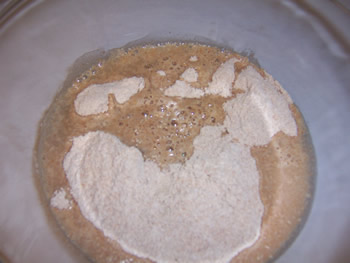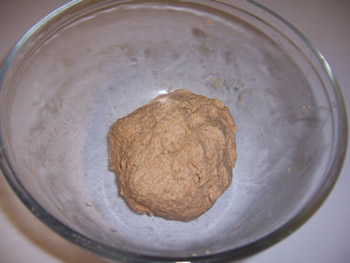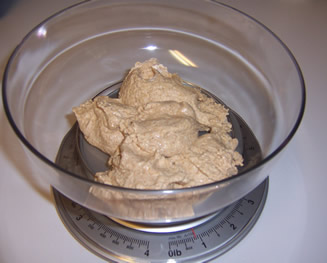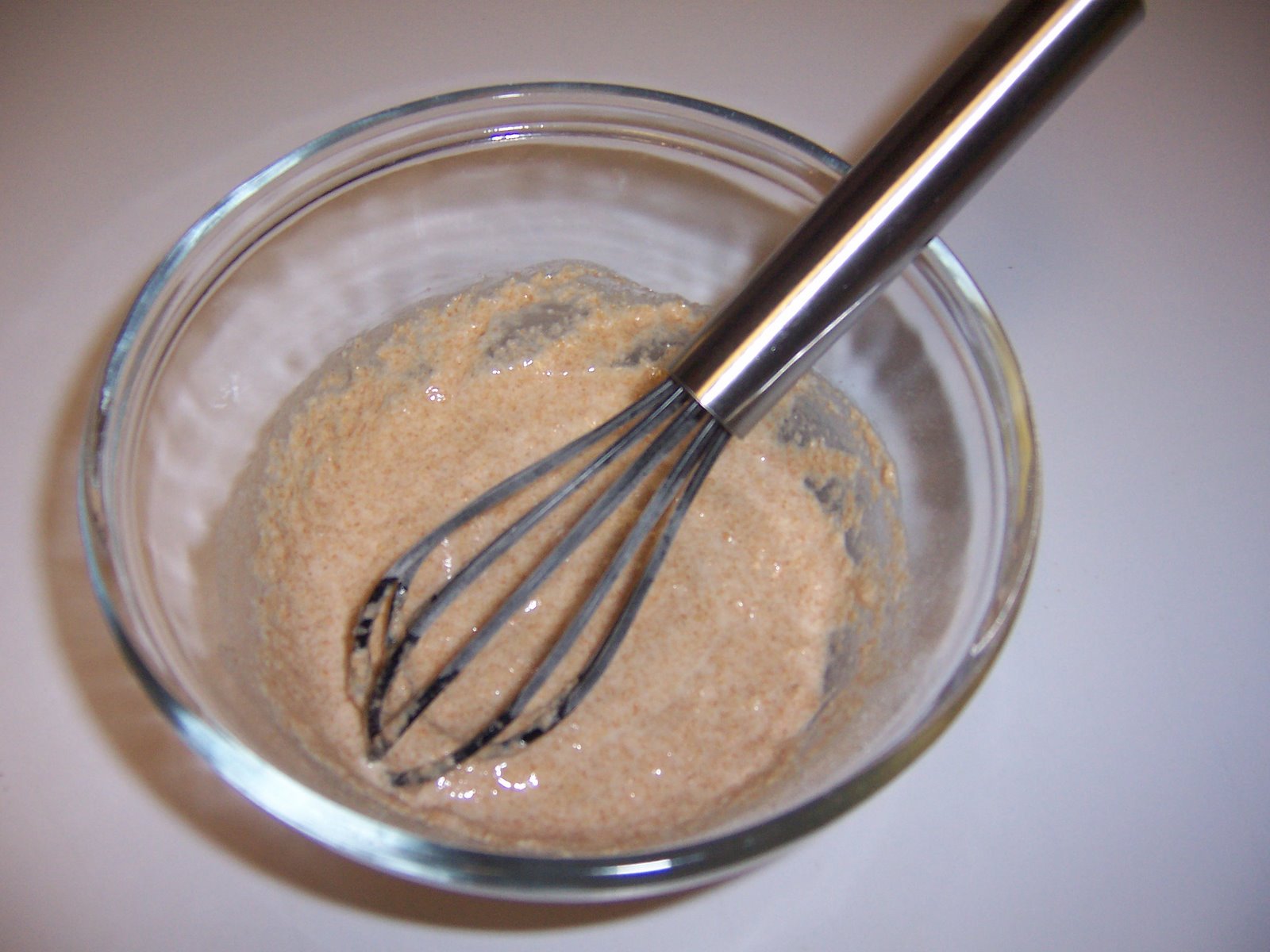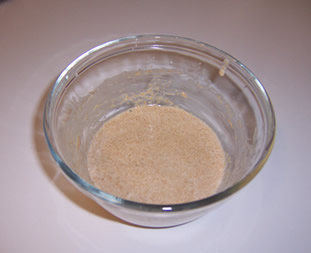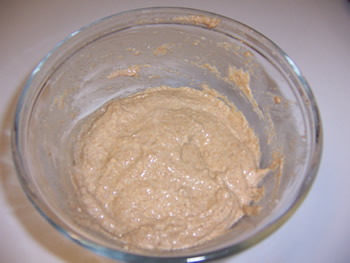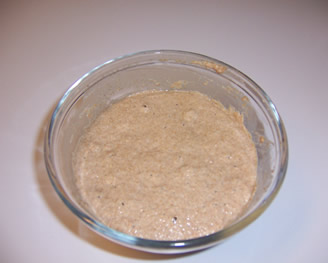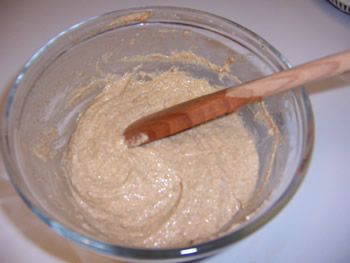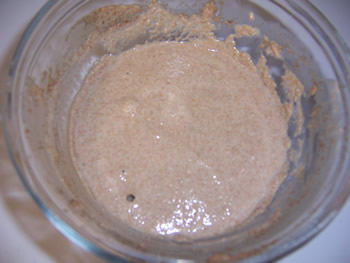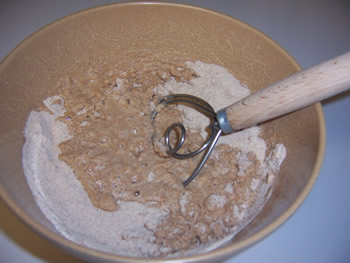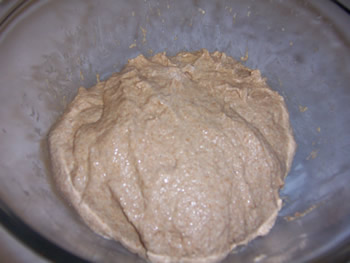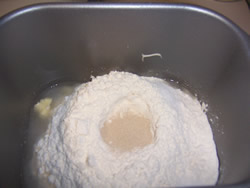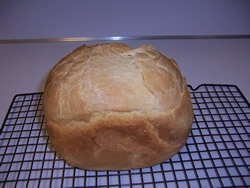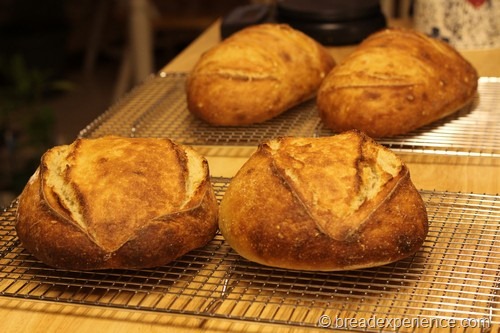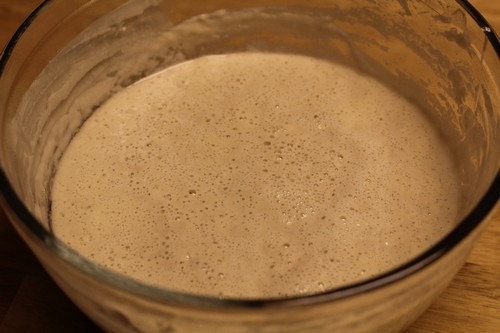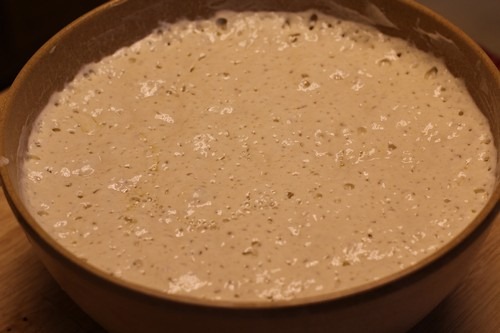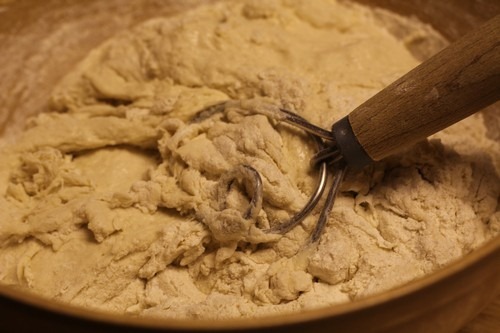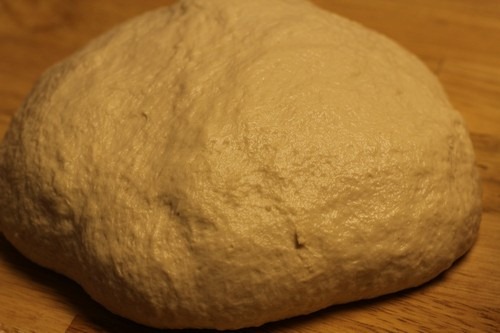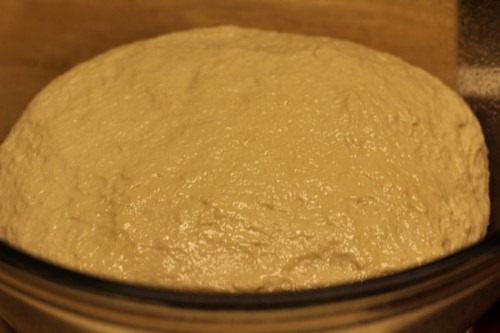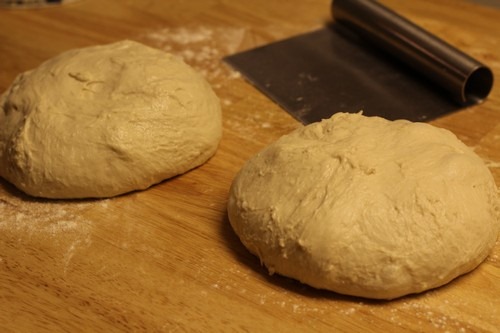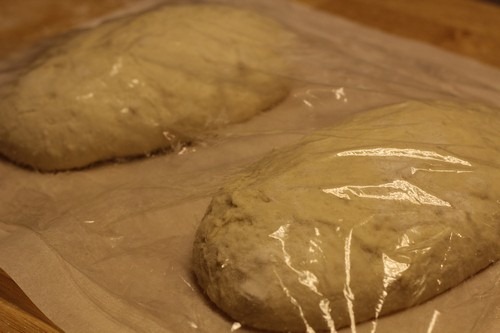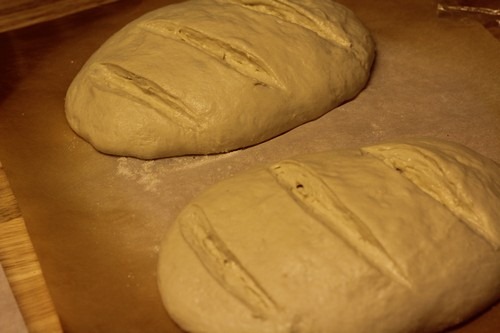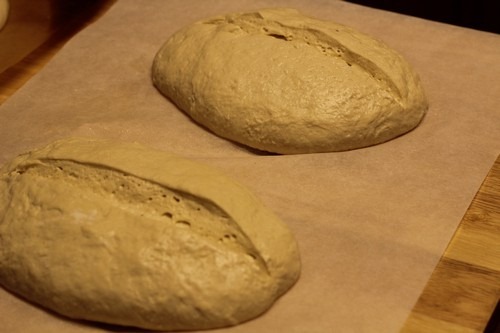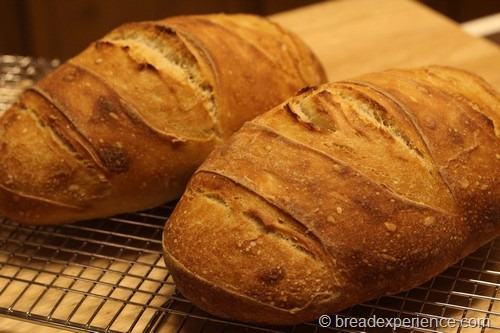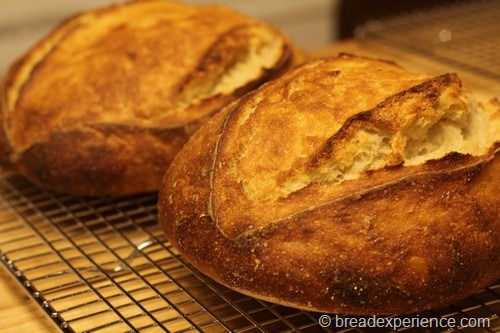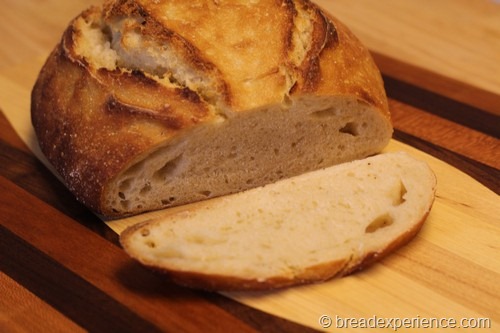This is a basic whole wheat bread that can be made into many shapes and baked in a variety of molds.
It can be made with either a biga or wild yeast starter. I used this whole wheat starter to give the bread a more complex and slightly sour flavor. I plan to use the loaf for sandwiches. Next time, we'll try a different shape.
To make the final dough, you combine two pre-doughs -- the starter and a soaker. Then add the additional ingredients. The starter is in the refrigerator ready to use. All we need to do now is create the soaker.
Whole Wheat Bread using "Wild Yeast" Starter
From Peter Reinhart's Whole Grain BreadsMakes: 1 large loaf
1st Step: Create the Soaker
- 1 3/4 cups whole wheat flour (preferably fine grind, or a mix of fine and medium or course)
- 1/2 teaspoon salt
- 3/4 cup plus 2 tablespoons milk (scalded and cooled to room temperature - about 70°F/21°C), or soy milk, or rice milk
1. Using a large spoon, stir together all of the ingredients for about 1 minute, until all of the flour is hydrated and the ingredients form a ball of dough. If you prefer, you can also make this in a stand mixer with the paddle attachment, mixing on low speed for 1 minute.
2. Cover the bowl with plastic wrap and leave at room temperature overnight or anywhere between 12 and 24 hours. (If it will be more than 24 hours until you mix the final dough, place the soaker in the refrigerator; it will be good for up to 3 days. Remove it 2 hours before mixing the final dough to take off the chill.)
2nd Step: Make the "wild yeast" starter (from the mother starter)
We have a recently refreshed mother starter (the one we finished a few days ago) so we'll just weigh off 14 ounces and use it in the final dough and then rebuild the mother starter.If you don't have a recently refreshed starter, follow the process outlined below to create a "wild yeast" starter from a piece of the mother starter to create 14 ounces to use in the recipe.
Creating a "Wild Yeast" Starter from a piece of the Mother Starter
- 5 tablespoons mother starter
- 1 1/2 cups whole wheat flour, any grind
- 1/2 cup plus 2 tablespoons filtered or spring water, at room temperature (about 70°F/21°C)
1. Using a large spoon, combine all of the ingredients together in a bowl to form a ball of dough. You can do this by hand or use a stand mixer with the paddle attachment or dough hook. Using wet hands, knead the dough in the bowl for about 2 minutes to be sure all of the ingredients are evenly distributed and the flour is fully hydrated. The dough should feel very tacky. Let the dough rest for about 5 minutes, then knead it again with wet hands for 1 minute. The dough will become smoother but still be tacky.
2. Transfer the dough to a clean, lightly oiled bowl (oiling the bowl is optional). Cover the bowl loosely with plastic wrap and leave at room temperature for approximately 4 to 6 hours, until the dough is nearly double in size. The dough should have a pleasant aroma similar to apple cider vinegar. If the starter has not doubled or acidified properly, allow it to continue to develop at room temperature. It could take up to 8 hours or even longer, depending on conditions such as the ambient temperature or the strength of the original piece of starter, but 4 to 6 hours is typical.
3. When the starter has fully developed, knead it for a few seconds to degas it, return it to the bowl, cover the bowl tightly with plastic wrap, and refrigerate. The starter will be ready to use anytime, and it will be usable for 3 to 4 days.
3rd Step: Create the final dough
- Use all of the soaker
- Use all (14 ounces) of the starter
- 7 tablespoons whole wheat flour, any grind
- 5/8 teaspoon salt
- 2 1/4 teaspoons instant yeast
- 2 1/4 tablespoons honey or
- 3 tablespoons sugar or brown sugar
- 2 tablespoons unsalted butter, melted or vegetable oil
- extra whole wheat flour for adjustments
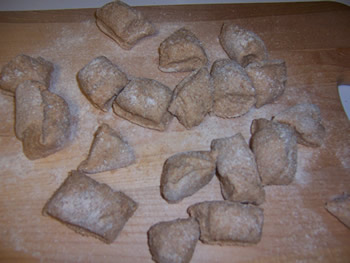
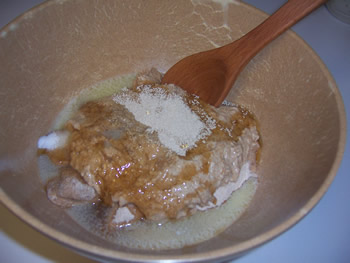
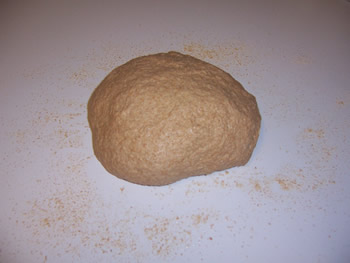
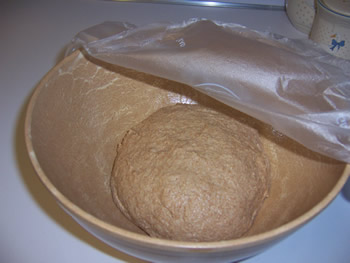

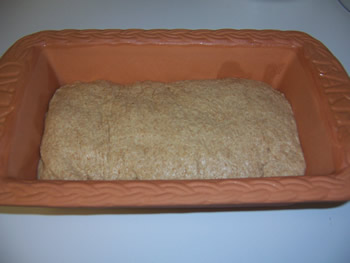
6. Preheat the oven to 425°F* and, when the dough is ready to bake, place it in the oven and lower the temperature to 350°F.
Since I'm using a clay bread pan in a gas oven, I'll need to place the pan in the cold oven and gradually increase the temperature. Otherwise, the clay pan will crack. If you're using an electric oven, you can just put the clay pan in the cold oven and set the temperature. It will gradually increase to the appropriate temperature.
Bake the loaf for 20 minutes and then rotate it 180 degrees and continue baking for another 20 to 30 minutes, until the loaf is a rich, reddish brown on all sides, sounds hollow when thumped on the bottom, and registers at least 195°F in the center of the loaf.
So that the clay pan doesn't crack, you're not supposed to put it on a cold surface when it is hot so I put it on a towel on a bread board.

Now, it's time to refresh the mother starter so it will be ready the next time we want to bake whole wheat bread. Refer to the process below:
Whenever the mother starter gets low - between 4 days and 2 weeks old - rebuild it by discarding all but 3.5 ounces.
Use the retained portion as a new seed culture and follow the instructions for creating a mother starter in Step 2 of the post on "Making a Whole Wheat "Wild Yeast" Starter".

